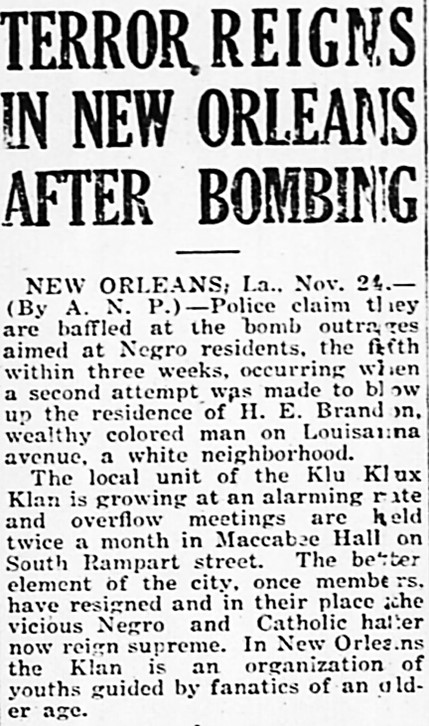On a day meant for celebration, the city of New Orleans was shaken by an act of terror that left indelible marks on its community and psyche. The New Year's Day attack, which unfolded in the vibrant heart of Bourbon Street, quickly escalated from a local tragedy to a national concern. As the dust settled and the initial shock gave way to reflection, questions arose about safety measures, community resilience, and the broader implications of such attacks. This article delves into the aftermath of this tragic event, examining its impact on the city and the steps being taken to ensure such incidents do not recur.
In the wake of the attack, various organizations, government bodies, and individuals have come forward to provide support, analyze the situation, and propose solutions. From relief funds established to aid victims and their families to security reviews recommending pedestrian-only zones, the response has been multifaceted and comprehensive. This analysis aims to explore these responses, shedding light on the complexities surrounding the New Orleans terror attack and its long-term effects on the city’s fabric.
The United for New Orleans Relief Fund emerged as a beacon of hope amidst the chaos following the attack. Launched to provide direct support to victims and their families, the fund serves as a critical resource in the healing process. Donations poured in from across the nation, reflecting the solidarity and compassion of people who were moved by the tragedy. In addition to financial assistance, the fund offers resources and updates to keep the community informed and engaged. This initiative underscores the importance of collective action in times of crisis, ensuring that those affected receive the help they need to rebuild their lives.
Beyond the immediate humanitarian efforts, the attack prompted deeper reflections on the nature of terrorism and its evolving tactics. Car-ramming attacks, like the one witnessed in New Orleans, are part of a growing trend where vehicles are weaponized to cause mass casualties. Experts studying these phenomena emphasize the need for increased vigilance and innovative security measures. The personal experience of witnessing such an attack can be profoundly impactful, serving as both a grim reminder of the threats we face and a call to action for enhanced preparedness. Understanding the motivations and methods behind these acts is crucial for developing effective countermeasures.
The FBI's investigation into the New Orleans attack classified it as an act of terrorism, underscoring the gravity of the situation. With at least ten lives lost and dozens injured, the agency's involvement highlights the seriousness with which such incidents are treated. Collaborative efforts between federal authorities and local law enforcement aim to uncover the full extent of the perpetrator's plans and connections. This thorough investigation not only seeks justice for the victims but also aims to prevent future attacks by identifying potential threats early.
Community Responses and Statements
Jewish Federations of North America expressed their horror at the targeted terrorist attack in New Orleans. The organization condemned the violence and offered condolences to the families of the victims. Their statement emphasized the unity and strength found within communities during times of adversity, calling for continued support and vigilance against hate and extremism. Such public declarations play a vital role in fostering solidarity and reinforcing the values of peace and coexistence.
In response to the tragedy, discussions around enhancing Bourbon Street's security gained momentum. A commissioned security review recommended closing the iconic street to traffic, transforming it into a pedestrian-only zone spanning eight blocks from Canal to Dumaine Street. This proposal aims to mitigate risks associated with vehicle-based attacks while preserving the area's vibrant atmosphere. By prioritizing pedestrian safety, the city hopes to create a safer environment for residents and visitors alike, promoting confidence and enjoyment in public spaces.
Further details revealed by the FBI shed light on the meticulous planning involved in the attack. Investigations indicated that the perpetrator, Shadsud-Din Jabbar, had researched Bourbon Street balconies, potentially considering them as targets or vantage points. This revelation underscored the importance of understanding attackers' methodologies and adapting security protocols accordingly. The updated injury count, increasing from 37 to 57, highlighted the extensive reach of the attack's impact, reinforcing the urgency of implementing comprehensive safety measures.
Resilience and Recovery: A Personal Perspective
Ryan Quigley '20, a former Princeton football player, recounted his experience during the terror attack while returning to New Orleans for the Super Bowl. His presence in the French Quarter on New Year’s Day placed him directly in the path of the tragedy, where he witnessed the devastating loss of life, including that of Tiger Bech '21. Sharing his story serves as a testament to the resilience of individuals who endure such harrowing events and continue to engage with the community despite the trauma.
Quigley's return to New Orleans symbolizes the spirit of recovery and determination exhibited by many in the aftermath of the attack. It reflects a commitment to honoring the memories of those lost and supporting the ongoing healing process. Events like the Super Bowl provide opportunities for the city to showcase its strength and unity, drawing attention to the progress made in rebuilding and revitalizing affected areas.
As New Orleans continues to navigate the challenges posed by this tragic event, the lessons learned and actions taken will shape its future. From establishing relief funds and conducting security reviews to fostering community solidarity and resilience, the city demonstrates an unwavering resolve to overcome adversity. The path forward may be fraught with difficulties, but with collective effort and determination, New Orleans remains steadfast in its mission to emerge stronger than ever.

